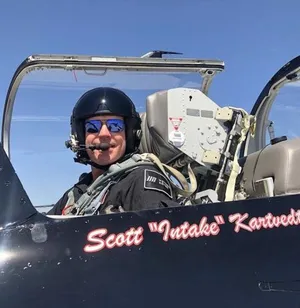
Shocking Act: Chief Roy Pierson has issued with a……
Author’s Note: An unforgettable experience of mine was flying with the Navy Blue Angels in 2000. Since the Blue Angels are in La Crosse for this year’s air show, I’m sharing a first-person account of my 2000 flight.
Those intense G-forces certainly explain a lot….
This was the insight shared by Navy Blue Angels Crew Chief Roy Pierson during a briefing on Wednesday at the La Crosse Municipal Airport. The Blue Angels are a major attraction at this year’s Deke Slayton Airfest 2000.
On Wednesday, a two-seater training jet arrived in La Crosse to stir up interest in the show and offer rides to some media members. I was one of the fortunate three selected, and I went first.
“I’m going to talk about flight physiology, equipment, and ejection,” Pierson said. I definitely experienced the first two, and fortunately, never had to deal with the third.
The Blue Angels were established in 1946 when Chief of Naval Operations Admiral Chester Nimitz ordered the creation of a flight demonstration team to highlight naval aviation. Since 1986, they have flown across the country in the Boeing F/A-18 Hornet, a jet powered by two 16,000-pound thrust engines, capable of speeds over 1,200 mph, or Mach 1.7.
Technically, Mach represents the ratio of an object’s speed to the speed of sound in the surrounding medium. Practically, it means pure, unadulterated speed.
Mach 1, or the speed of sound, is 760 mph at sea level. During my flight, Pilot Lt. Scott Kartvedt reached speeds of up to 620 mph, just shy of breaking the sound barrier. It wouldn’t be good PR to shatter the windows of the Coulee Region with sonic booms.
The speed was incredible, but I can’t say the same about the physiological effects. Despite taking a motion sickness pill, I had to use what Pierson called “party bags” several times during the flight. I held onto them tightly, never forgetting rule No. 2.
)




